Morning glory, Ipomoea purpurea, is a flowering annual vine for USDA Hardiness Zones 2 to 11.
Native to Mexico, it has trumpet-shaped blooms that measure two to three inches across. Colors include blue, pink, purple, and white.

We link to vendors to help you find relevant products. If you buy from one of our links, we may earn a commission.
Our guide to growing morning glories has all you need to know to cultivate I. purpurea at your house.
And our round-up of 15 of the best cultivated varieties of morning glories offers an exciting selection from which to choose.
In this article, we zero in on how to collect and store seeds for the purpose of planting them the following year.
Here’s the lineup:
Collecting and Storing Morning Glory Seeds
This is quick and easy, so let’s jump right in!
From Flower to Pod
A morning glory flower starts out as a slender puffed bud that is folded in a spiral and comes to a soft point at the tip.
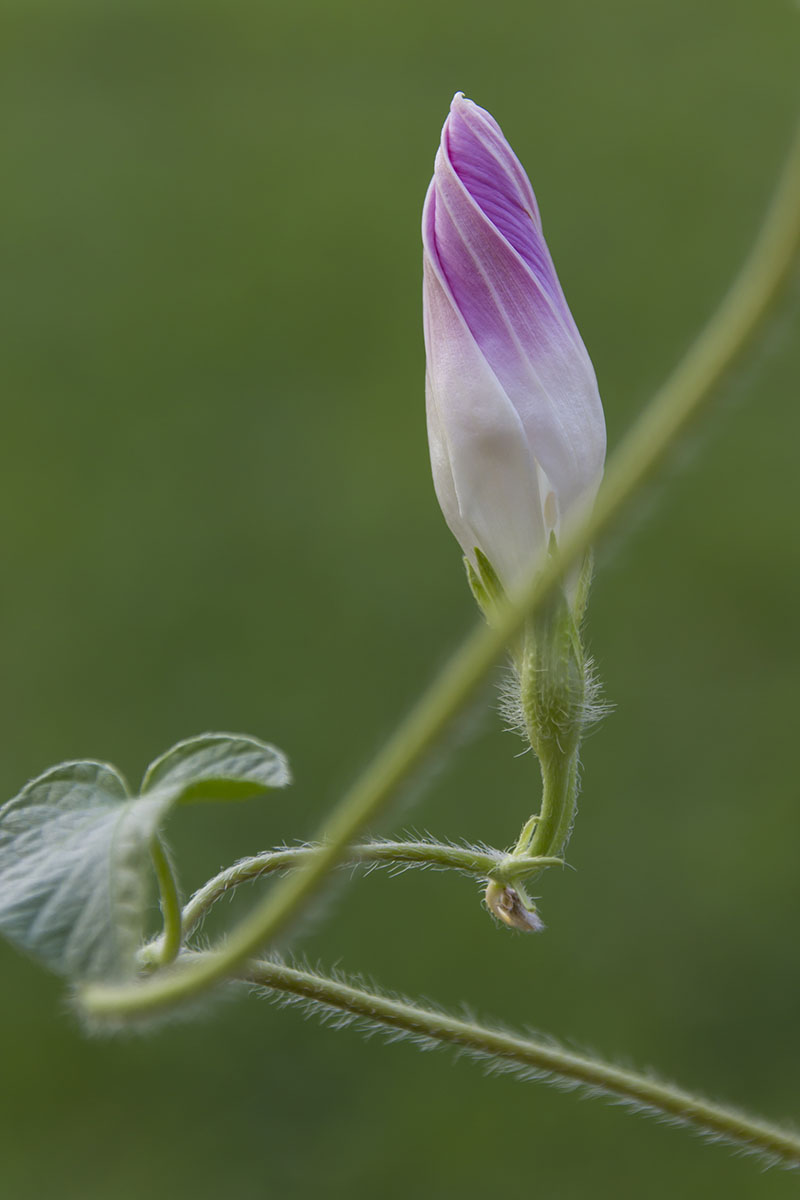
It opens into a rounded hexagonal bell-shaped blossom that lasts for one day.
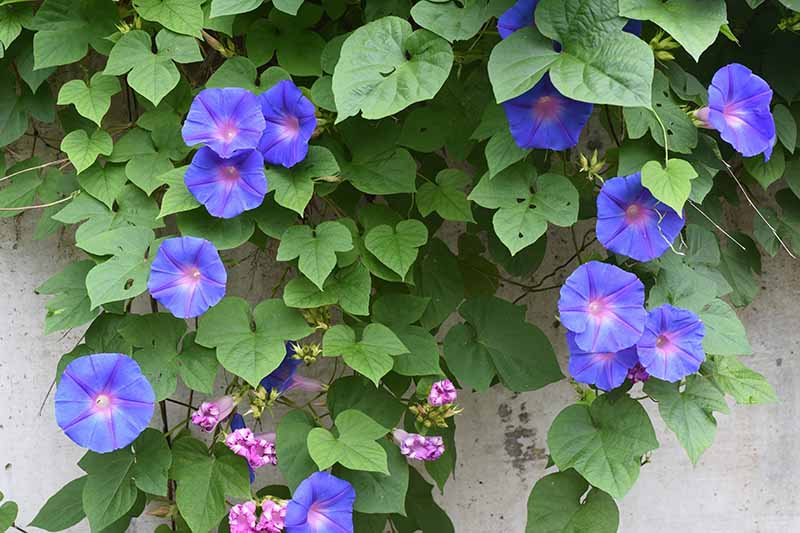
After blooming, the flower closes, folding its edges inward before dropping off the vine.

It leaves behind an empty green calyx with flared, pointed tips. To me, it resembles a jewelry setting without a stone.
A seed pod forms inside the empty calyx. It looks like a rounded green bump with a little point on the bottom.
Buds, flowers, and pods may appear simultaneously on the vines.
Gradually, each pod turns brown and papery, and the seeds ripen to brown or black. That’s when they are ready to harvest.
By season’s end, all that remains of the vines are brown withered leaves, stems, and pods.
How to Collect
Morning glory pods often appear in clusters.
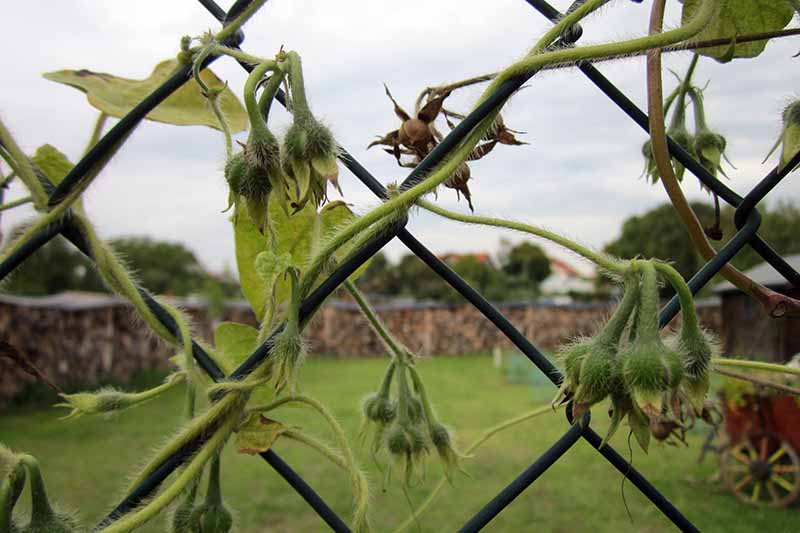
Pods that are brown, papery, and break when you touch them are ready to pick.
Here’s the collection process:
- Choose a dry day. If it rained the day before, wait until tomorrow.
- Go into the garden in the late morning, after the dew dries up.
- Hold a bag or container under a pod or cluster of dry brown pods.
Here you have options:
- Snap off entire pods and let them fall into the bag.
- Or, crumble the pods between your fingers and thumb to release the brown/black contents and let everything fall into the bag.
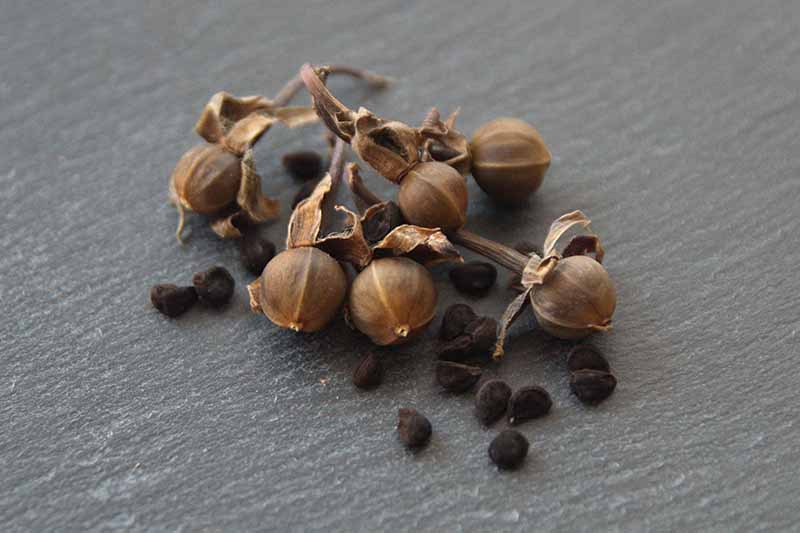
Either way, you’re going to have both seeds and chaff in the bag when you are through collecting.
- Spread the contents of the bag out on a light color sheet or table cloth.
- Crumble unbroken pods to release their contents.
- Keep the seeds and discard the chaff in the garden or on the compost heap.
It’s as simple as that.
In addition to I. purpurea, there are other types of morning glory, including the white night-blooming moonflower, Ipomoea alba.
The harvest and storage process is the same, however the seeds are a light tan, not brown/black, when ripe.
Year-Long Storage
To save your harvest, place the seeds in an airtight container, such as a sealed envelope or baby food jar, and store them in a cool, dark, dry location.
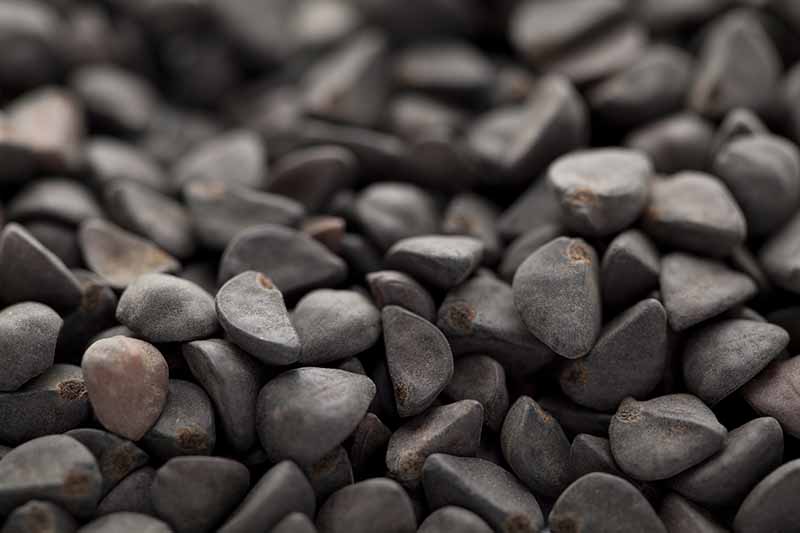
Some folks like to use the crisper drawer of the fridge, where the humidity is lowest, for storage. I sometimes keep mine in the freezer.
The less moisture that penetrates them, the longer they are likely to remain viable.
A Note of Caution
Morning glory seeds are toxic. Do not store them within reach of children, and label their containers to avoid accidental ingestion.
Use the seeds within the next one to three years. After that, viability may decrease.
Glorious Once Again
I like to grow morning glories. Mine are mostly hot pink, with the occasional violet-blue flower.
Believe it or not, here in southeastern Pennsylvania, I planted them five years ago, and they have self-sown and returned every year since.
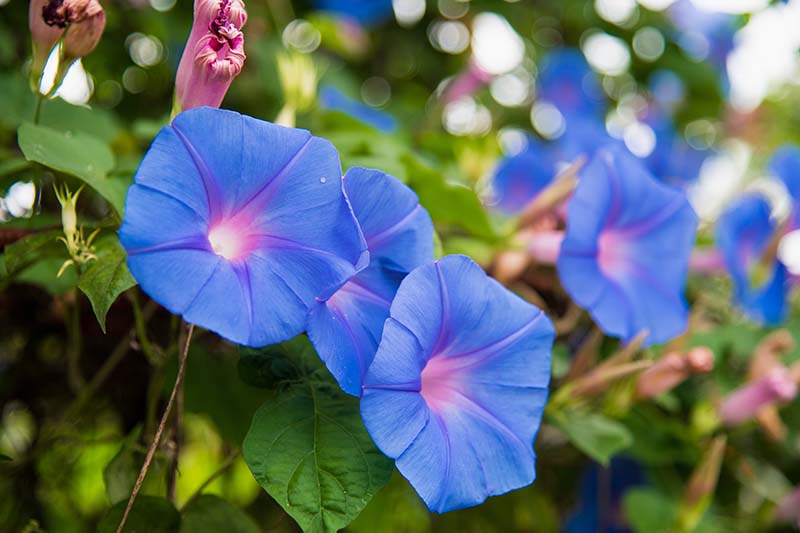
So why do I collect seeds?
For three reasons:
First, if there’s a really harsh winter, my flowers may not come back.
Second, I like to swap seeds with the gardeners in my family.
And third, by collecting them instead of letting them all drop, I can exercise some control over where they grow.
Do you collect and share morning glory seeds? Let us know in the comments section below!
If you found this guide informative, you may want to read these articles about saving flower seeds next:
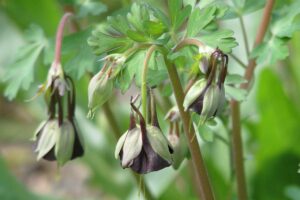

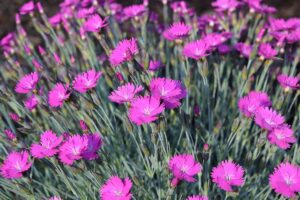
My morning glories started late this year. Will I be able to collect seeds before they are ready to harvest? We already have had a frost and most seeds are not ready to pick. Can anyone find out for me?
Hi Deborah –
Morning glory seeds need to dry on the vine and cannot be harvested green. If the seed pods turn brown, you can save the brown-black seeds inside.
Hi, I started growing morning glories last year, I love ,especially, the moon flowers. I had trees cut left 4-8’ stumps were perfect for my vines.
I had blue, magenta and the white flowers.
My vines look dead after a night of 24* which is rare here in Daytona.
Will the vines come back yearly? I know a lot of the seeds dropped they are already coming up in the yard.
Thank you
Hi Kimberly –
While morning glories are annuals, in some locations, like yours in Ohio and mine in Pennsylvania, the self-sown seeds do come up again the following year. However, they may not produce flowers of the same color or quality. I find that whenever I count solely upon their return, I am rewarded with a scanty floral display.
I live in northwestern Arkansas and had an amazing year for my Morning Glory’s and wanted to share this video of some that I planted around a Catalpa tree. The video doesn’t show all the colors or do it true justice. It had every color imaginable and the humming birds loved them. Although the Catalpa worms stripped the leaves of the tree, it didn’t harm my plants. Any suggestions on how to prevent the worms would be great.
Hi Lisa –
Your morning glories sound exquisite! Bt, Bacillus thuringiensi, may be useful in battling catalpa worms. I refer you to our article on this biological pesticide. How to use Bacillus thuringiensis (Bt) to Control Insect Pests.
I planted my glory seeds in late February, in garden zone 7B NC, and they’re blooming beautifully since about mid-May. In just a month since blooming, I’m seeing down-hooked flowers that look spent of petals. I plucked one and took it apart. It’s a pod for sure. Wash yo hands, there’s doo doo in soil! Glories have LSA, like mild lsd. Kids were eating like 300-400 store seeds of glories to buzz. Stores were called and warned. I think the fungicides probably did more than the seeds for em, but are the big pods the lsa trip part? Ain’t no… Read more »
Hello Karen –
As stated in the article, morning glory seeds are toxic and should never be consumed.
To harvest seeds, wait until the pods are brown and the seeds rattle inside them.
I have consumed 300 seeds at a time more than once. It is not a buzz, it is a full on psychedelic trip. To call them toxic though is misleading and incorrect. You don’t need to worry for small kids though as you would never want to consume that many based on taste. At the beginning they don’t have much taste, but by 300 they are disgusting. I ate the first 300 raw, but after that I processed them into powder with a mortar and pestle and put them in a smoothie.
Thanks for weighing in Scott, the writer is referring to the the fact that these are not suitable for consumption as they contain lysergic acid hydroxyethlamide, which is a toxin. As is often the case, the poison is in the dose.
every year I grow a 35 foot mg vine up the old tv antenna
One year I pulled into driveway and muttered what has been eating my mg. JUST then a buck with a huge rack walked just behind my car.
Omgosh that happen to me this morning Im in the process of moving and my plant was full and lively yesterday. Today is just stems.
So I didn’t know I had to wait until the pods were dark and dry and I picked a bunch of pods that were still green
We’re getting ready to move and I didn’t want to leave them behind so I didn’t have the luxury of waiting any longer
Is there any way that I can still dry them out so I can plant them next year?
Or did I ruin them?
Thanks for any advice
Hi Colleen –
Spread the green pods in a single layer to dry out. If the seeds inside are well developed, they may be viable.
And best of luck in your new home!